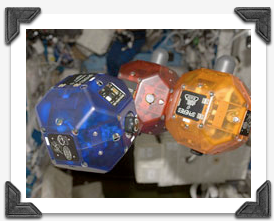Today, NASA celebrate ten years of humans living and working continuously aboard the International Space Station. This global milestone is tremendously significant, both for NASA and our partners. It recognizes the success of an amazing feat of engineering and a magnificent leap forward in the story of human achievement. I congratulate the entire station team and the thousands of people worldwide who have helped us reach this anniversary.
Since Bill Shepherd, Yuri Gidzenko and Sergei Krikalev first boarded the station as the Expedition 1 crew, more than 196 people have visited the complex, and by the exact time of the anniversary this morning, the station will have completed 57,361 orbits of Earth, traveling some 1.5 billion miles.
More than 600 different research and technology development experiments have been conducted on the station, many of which are producing advances in medicine, recycling systems and a fundamental understanding of the universe. On Oct. 25, the station set a record for being the longest continuously inhabited spacecraft. On that day, the space station eclipsed the previous record of 3,644 days set by the Russian Mir Space Station. The station is our toehold in space, and it will be an essential part of our work to send humans on missions beyond low Earth orbit in the future.
With passage of the NASA Authorization bill, we will now be able to extend the life of the station to at least 2020. Representatives of the five international agencies that built and operate the outpost have also agreed on this in principle. Indeed, one of the station’s greatest legacies is the international partnerships we have forged to create something awe-inspiring that benefits people all over the world. Partnerships with other nations will be essential to the global exploration enterprise of the future, and with each new day, NASA and its partners are pushing the envelope of human achievement in space into uncharted territory.
On board the station right now are six talented and courageous travelers representing NASA and our Russian partners. Tomorrow, the crew of STS-133 is expected to lift off on its way to the International Space Station aboard the last scheduled flight of shuttle Discovery. As we enter the station’s second decade, our path forward will take us deeper into space and expand humanity’s potential farther. The lessons we learn on the station will carry us to Mars and beyond. I want to give a heartfelt thank you to the six crew members on orbit and all the teams over the years that have helped us get to this milestone day.
 You won’t find any light sabers on the International Space Station, but you will find a trio of “droids” that look a lot like what any self-respecting science fiction fan remembers as a Star Wars “remote.”
That’s the tricky little device that Luke Skywalker used to hone his light-saber skills before he went up against Darth Vader and the rest of the Evil Empire.
But instead of being used for light-saber practice, the droids on the space station are being used to test automated rendezvous and formation flying in microgravity. And soon, there may be a host of other things the droids will be used to test, as their capabilities and uses are expanded and made available for National Laboratory and other uses.
You won’t find any light sabers on the International Space Station, but you will find a trio of “droids” that look a lot like what any self-respecting science fiction fan remembers as a Star Wars “remote.”
That’s the tricky little device that Luke Skywalker used to hone his light-saber skills before he went up against Darth Vader and the rest of the Evil Empire.
But instead of being used for light-saber practice, the droids on the space station are being used to test automated rendezvous and formation flying in microgravity. And soon, there may be a host of other things the droids will be used to test, as their capabilities and uses are expanded and made available for National Laboratory and other uses. You won’t find any light sabers on the International Space Station, but you will find a trio of “droids” that look a lot like what any self-respecting science fiction fan remembers as a Star Wars “remote.”
That’s the tricky little device that Luke Skywalker used to hone his light-saber skills before he went up against Darth Vader and the rest of the Evil Empire.
But instead of being used for light-saber practice, the droids on the space station are being used to test automated rendezvous and formation flying in microgravity. And soon, there may be a host of other things the droids will be used to test, as their capabilities and uses are expanded and made available for National Laboratory and other uses.
You won’t find any light sabers on the International Space Station, but you will find a trio of “droids” that look a lot like what any self-respecting science fiction fan remembers as a Star Wars “remote.”
That’s the tricky little device that Luke Skywalker used to hone his light-saber skills before he went up against Darth Vader and the rest of the Evil Empire.
But instead of being used for light-saber practice, the droids on the space station are being used to test automated rendezvous and formation flying in microgravity. And soon, there may be a host of other things the droids will be used to test, as their capabilities and uses are expanded and made available for National Laboratory and other uses.